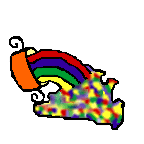Toronto Slovaks before 1934*
*This brief history first appeared in the jubilee book, "25 Years Sts. Cyril and Methodius Parish Toronto, Canada 1934-1959," based on the minutes of the Slovak societies.
When writing about Slovaks in Canada, one must go back to the latter part of the nineteenth century. It was then that the Slovaks landed on the shores of this great country of opportunity. Practically all settled in western Canada. Fort William was, for a long time, the largest settlement of Slovaks.
After the First World War Canada opened her doors to central Europeans and the Slovaks, as others, began pouring into Canadian ports. Toronto became a settlement of the Slovak people in about 1923. At first this city was just a stopover for many. Some moved on into the mining territories-others made attempts to enter the United States-and those who remained here found employment, though it was hard manual labour, and settled down.
The year 1927 was an historical year for the Slovak people of Toronto. It was then that the Slovaks began to get organised as a group. Their first concern was to find a parish church which they could join as a body. St. Stanislaus on Denison Avenue being a Polish parish, a language similar to Slovak, was an ideal place to go to church because it was in the district where the majority of Slovaks lived, and they were able to understand the language. This was the first church which the Slovaks attended as a group.
Here they formed three societies-the First Catholic Slovak Union, Slovak Catholic Sokol and Assembly No. 418 of the American Slovak League, which later became independent as the Canadian Slovak League, a mutual benefit society. Now the Slovaks began to sponsor cultural activities. The first was a play entitled, "The Slovak Orphan." This was 1928. Rehearsals were held in Joseph Tokar's cellar. Next on the agenda was to organise a church choir. Stephen Vojtech was the director and practices were also held in the cellar.
In March 1929 the offices of the Slovak societies decided to form a parish. The problem of getting a priest arose. The officers of branch 785 of the First Catholic Slovak Union turned to their headquarters in the United States to ask for help in this matter. In the meantime, on the Feast of St. Joseph, sixty-one men decided to carry on with plans for forming a parish. A committee was elected. The members were: Steve Liptaj-president, Joseph Zec-vice president, Joseph Husar-secretary, Stephen Mazakovsky-treasurer, Paul Sedik-recording secretary. John Stimec, Joseph Zgodava, Vito Balazovic and Andrew Sabol were to be the auditors. Louis Sajdik and Stephen Fancovic were the collectors in church. Another committee was also created-house-to-house collecting-a monthly chore. The collectors were: Joseph Mihlisin, Stephen Liptaj, Joseph Mondok, Andrew Circ, Stephen Mazakovsky, John Stimec, Stephen Babik, Joseph Tokar and Bartalomej Rovnak.
Later the societies left St. Stanislaus' parish and went to St. Mary's on Bathurst and Adelaide Streets. They had their mass on Sundays at 9:00 a.m. with Slovak singing. They also rented St. Mary's Hall for their activities. During mass Mr. Sajdik and Mr. Liptaj made the necessary announcements and read the Epistle and Gospel. The organist was paid $5 every Sunday for playing the organ.
On October 27, 1929 Rev. Andrew Sulek, OFM, came from Buffalo to say mass and preach. This was the first time the Slovak people had a Slovak priest in Toronto. Rev. Albert Florian, SVD was later a more frequent visitor to Toronto. In March 1931, the Society of the Holy Name and the Rosary Sodality were organised. Frank Savel was the president. In May 1932, the Holy Name banner was purchased. In December Rev. Amand Kopac, OFM, conducted the first mission for the Slovak people.
Up to 1934 the following priests made official visits to the Slovaks in Toronto: Rev. Amand Kopac, OFM, Father Elsik, Father Vincent Cech and Father John Pochly.
Soon the societies decided to rent a hall at the corner of Queen Street and Denison Avenue. They were no longer able to pay for the use of St. Mary's Hall, and it was not always available because of other parish activities. The rent for the hall on Queen and Denison was $80 a month, but it was at the disposal of the people every day. Plays, concerts and other social activities helped to raise the money for the rental of the hall.
The great unemployment crisis in 1933 practically broke the back of the potential parish. Men began to leave Toronto for farms and other places in search of work. Some even returned to their homeland. According to the records, only about 10 per cent of the parishioners paid their dues and not many attended church. It was then that the Slovak societies authorized the branch of the First Catholic Slovak Union in Toronto to write to Rev. Francis Dubosh-then the chaplain of the First Catholic Slovak Union in the United States-to come to their rescue. An encouraging letter was received informing the people here that there was a good chance that the Slovaks of Toronto would get a priest.
The problem of where the Slovaks would worship if the priest should come arose. Mr. Sajdik and Mr. Stimec looked around the vicinity in search of a place. They came upon the idea of going to the Jesuit House of Philosophy at 403 Wellington Street West. They were received by a brother who, by chance was a Slovak-Brother Peter Bela, SJ. He introduced Mr. Sajdik and Mr. Stimec to the rector of the house, and they presented their problem to him, Brother Bela interpreting. This was in January 1934.
In two months time, a letter was received from Father Dubosh, informing the Toronto Slovaks to get ready for the new priest because he would arrive in a short time.
 Return to home page
Return to home page



